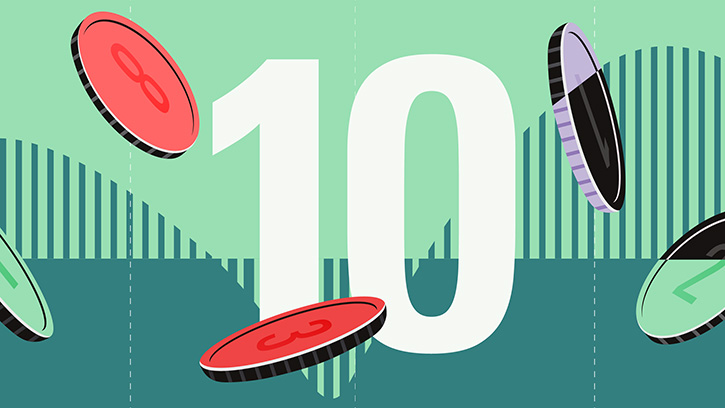Earlier in the month, Morningstar equity analyst Catharina Milostan raised her uncertainty rating on BP as the tricky task of estimating the potential costs and long-term liabilities of its Gulf of Mexico oil spill became trickier still. Last week she examined BP's ability to continue to pay its annual dividend and also increased her original total spill costs estimate. This week, Milostan has moved to lower her fair value estimate for the BP shares--this change is explained below as part of her updated analyst report on the stock as at end May 2010.
Fair Value Estimate: 645p ¦ Uncertainty Rating: High ¦ Economic Moat: Narrow
Thesis
BP CEO Tony Hayward's three-year mandate to restore BP's image through operational improvements has taken a body blow, as the firm pursues an all-out effort to stop the Macondo oil spill in the Gulf of Mexico. BP may have the cash resources and funding options to cover the costs to stop the oil leak, contain the oil spill, and repair damaged Gulf Coast shorelines. However, it may take years for BP to resolve regulatory and legal issues--and, more importantly, to rebuild its reputation.
Hayward took the reins in May 2007 to set BP's new course after a series of accidents required new management policies. BP went on a buying spree, acquiring US oil majors Amoco in 1999, Arco in 2000, and the Castrol brand in 2000. A subsequent directive to integrate acquired businesses and focus on margins led to some misguided spending cutbacks. A series of accidents including a deadly explosion in March 2005 at its Texas City refinery and an oil spill from a corroded portion of one of its Alaskan North Slope pipelines forced BP's managers to renew their focus on improving safety and operations.
BP was making some headway on its goals to expand upstream operations to new fields, turn around downstream facilities, and simplify corporate structure to facilitate decision-making. To pursue upstream growth, BP's challenge was to find enough new oil and gas fields across several continents to eke out annual production gains. Political tensions reduced access to new fields, which could explain's BP's renewed interest in North America with purchases of properties in emerging Woodford Shale and Fayetteville Shale properties, and deep-water drilling success in the Gulf of Mexico. This year's pending purchase of Devon Energy's assets will give BP an important entry into deep-water Brazil oil prospects in the Campos and Camamu-Almada basins, boost already robust deep-water Gulf of Mexico operations, and increase its share in the ACG development in the Caspian Sea, Azerbaijan. Like its supermajor oil peers, the scale and scope of its global growth projects gives BP some economic moat, as many smaller competitors don't have the same resources.
Revamping BP's downstream, or refining and marketing, businesses remains a challenge, given the volatility of crude-oil feedstock costs and prospects of recession-induced decline in gasoline demand. In contrast to ExxonMobil and Royal Dutch Shell, BP's downstream business accounts for a smaller share of earnings versus its upstream unit. BP has made steady progress in restoring its damaged Texas City refinery, reaching full capacity at year-end 2008. Steady operating improvements may help, but fluctuating refining and marketing margins are more of a factor for earnings potential.
However, BP faces greater uncertainty as the scope and cost of the oil spill cleanup remains unclear, as do potential regulatory and legal liabilities. Over the longer term, new safety regulations and technical challenges may slow down deep-water drilling in the US and perhaps even in Brazil and other ultra-deep-water fields. This could cut into production growth plans in these regions. However, BP's global diversification with major projects on several continents and downstream businesses may help to offset potential deep-water offshore drilling limitations.
Valuation
We're reducing our fair value estimate for BP to 645p per share from 651p to reflect growing Gulf of Mexico oil spill recovery costs, and the potential for greater regulatory and legal liabilities as the firm struggles to stop the Macondo oil spill. Each day of unstopped oil flow requires BP to incur additional oil containment costs at subsea and surface levels. Costs from shoreline protection and clean-up efforts expand as the oil spill expands, as do potential settlements for businesses along the Gulf Coast. Government-appointed experts raised estimated oil flow rates to 12,000 to 19,000 barrels per day (b/d), well above the earlier 5,000 b/d estimate. This in turn could impact potential legal penalties, as civil penalties could reach $4,300 per barrel of oil spilled into the Gulf of Mexico. We raised our estimates for oil recovery costs and potential liabilities with estimated near-term oil containment costs now ranging from a low case of $2 billion to high case of $5 billion. Longer-term environmental clean-up and restitution for lost Gulf Coast business could each range from $2 billion to $10 billion. Potential civil penalties remain the most uncertain component, as it may take years to determine responsibility among parties, regulatory actions, and legal penalties via the court system. We adjusted our model assumptions using a $20 billion midpoint for our estimated range for BP's 65% share of total potential costs and liabilities of $4 billion to $37 billion. Our base scenario also assumes a potential slowdown in US deep-water activity, curbing production growth in this region. We kept our assumptions for other BP oil and gas projects and downstream activity unchanged. In our discounted cash-flow model, our benchmark oil and gas prices are based on Nymex futures contracts for 2010-12. For oil, we use $75 per barrel in 2010, $77 in 2011, and $79 in 2012. For natural gas, we use $4.50 per thousand cubic feet in 2010, $5.20 in 2011, and $5.70 in 2012. We adjust our benchmark pricing to reflect the quality, location, and hedging of the firm's production.
Risk
BP's valuation carries more uncertainty than ExxonMobil or Shell's because the firm is less integrated, with more of its earnings coming from the E&P business than from potentially offsetting refining operations. Like its peers, a sustained drop in oil and gas prices can hurt upstream earnings. Lower crude-oil feedstock costs could help refining margins, but refined product pricing lags could quickly swing refining profits to losses. BP's global business faces potential disruptions caused by political risks, particularly with its heavy exposure to Russia. Disruptions caused by oil spills, environmental and operational constraints could further limit earnings potential.
Management & Stewardship
After John Browne's resignation, Tony Hayward was promoted to group chief executive in May 2007 to set a new direction for the firm. Hayward joined BP in 1982 and came up through the E&P business to eventually head that unit as chief executive officer. The strategic shift came after a few troubling years for BP, with the deadly Texas City refinery explosion, Alaskan North Slope oil pipeline leaks, refinery shutdowns, and project delays. BP is investing more in safety and operating improvements. Along with Hayward's appointment, BP shifted to new heads of the E&P and refining units. Andy Inglis became chief executive of the E&P unit after joining BP in 1980 and working successfully at BP's North Sea and US deep-water Gulf of Mexico operations. Iain Conn became CEO of the refining and marketing unit in June 2007 after joining BP in 1986. Carl-Henric Svanberg became BP's nonexecutive chairman of the board on January 1, 2010, after serving as CEO and president of Ericsson and chairman of Sony Ericsson Mobile Communications. After buying back $2.9 billion of shares in 2008, BP ended its share-repurchase program with no shares repurchased in 2009.
Overview
Growth: We look for near-term gains in oil prices and production growth from new projects to support BP's near-term cash generation. However, low US natural gas prices and still weak demand for refined products could serve as partial offsets. Rising oil spill recovery costs and potential liabilities could limit cash for growth projects over the next few years. New limitations on deep-water drilling could dampen BP's growth in offshore US. Longer-term, BP's global portfolio of projects may help to drive earnings growth as product demand and prices recover along with the global economy.
Profitability: Profitability will depend on BP's ability to fully utilise its assets while managing operating and capital costs. BP's profit margins could be squeezed by low gas prices and low demand for refined products during the next few years. A global economic recovery could drive up oil and gas prices, and in turn boost margins. However, near-term oil spill-related costs and longer-term potential regulatory and legal penalties could draw cash away from growth projects and pressure margins over several years.
Financial Health: As a result of decades of profitability and strong cash generation, BP has kept debt levels within its self-imposed limit of a 30% net debt ratio (net debt/(net debt & equity)). To meet current oil spill-related calls on cash, BP has access to a $6.8 billion quarter-end cash balance and capacity to incur another $13 billion in new debt before exceeding its 30% net debt ratio limit. Estimated cash from operations of over $30 billion per year may support annual dividends of $10.5 billion and capital investments of $20 billion. However, uncertain future cash calls to meet potential regulatory or legal liabilities arising from the oil spill could cause the firm to incur more debt, and refrain from growing its dividend.
Profile: London-based BP is global integrated oil and gas company with operations across six continents. BP's upstream operations produced 4.0 million barrels of oil equivalent per day in 2009. Downstream operations include refineries with 2.7 million barrels per day of capacity, petrochemical plants, and retail marketing operations with 22,600 service stations.
Strategy: CEO Tony Hayward redirected BP's strategy by setting new goals of upstream growth, downstream turnaround, and corporate simplification in 2008. Upstream growth centres on developing key project areas including the Asia Pacific region, Azerbaijan, Algeria, Angola, Trinidad, and the deep-water Gulf of Mexico. BP is focused on working closely with TNK-BP partners in its venture in Russia to support long-term growth. Downstream turnaround and corporate simplification hinge on operating changes and adoption of best practices.
Bulls Say
1. BP's deep portfolio of growth projects, including developing promising deep-water oil and gas discoveries and restoring refining facilities, could help drive long-term growth.
2. BP's goals to boost downstream efficiency and safety remain on track with operational improvements, particularly at the previously troubled Texas City refinery.
3. BP's level of financial and operational disclosure stands out from its peers, and highlights the company's efforts at transparency.
Bears Say
1. BP's efforts to stop and contain oil spilling from its 65%-owned Macondo well could add to billions in costs and potential liabilities. Over the longer term, new regulations could stall deep-water US projects.
2. BP's business is skewed more to the upstream than refining business, making it more vulnerable to oil and gas price volatility than more-diversified major oil companies.
3. BP's 50/50 joint venture in Russia, TNK-BP, generates nearly one fourth of the firm's production, making it more vulnerable to political risks.
4. Environmental, political, and commodity price risks are always present in the oil and gas industry. BP's production in OPEC member countries might be periodically curbed.







:quality(80)/cloudfront-us-east-1.images.arcpublishing.com/morningstar/65ZULTM63AT4J7TRZBDQ2L7XIA.jpg)
















